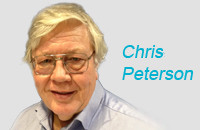Instant portraits of a gunman twists reporting mass shooting
By Zhong Bu (CRIENGLISH.com) Updated: 2015-10-09 13:47The irony is that these profiles were mainly based on the interviews with the killer's neighbors and acquaintances who did not know well about the suspect. Just like what the Washington Post reporters found, the incomplete information created a "murky" picture of the shooter that didn't add up. Then how could the public possibly depend on these profiles to know the suspect's motives and personality? By publishing such instant portraits of a killer in a rush, usually in less than 24 hours, are the journalists doing the reporting responsibly?
My colleague, Professor Russel Frank shares a similar concern. He asks in a column, "How well do the neighbors and classmates who are called upon to provide these snap personality assessments actually know the suspect?" Based on his observation, suspects usually share "such attributes as a shaved head, divorced parents and a preference for military clothing, horror films and goth music." On the other hand, he says, "Countless teens come from similar backgrounds and exhibit similar fondness for such pop culture offerings" are never a killer.
The copycat effect
Communication scholars often urge journalists take a cautious approach to shooters' profiles due to the possibility of glamorizing them that create the danger of copycat effect. Of course, profiling killers are human interest stories, and the media have the responsibility of informing the public about news events and reporting all related facts. Yet an excessive focus on shooters may amplify the problem by encouraging copycats to imitate the crime for garnering the same media attention.
When reporting the suspects in mass shooting, journalists must realize that their news reports could have a tremendous influence on how people interpret the shooting. To avoid the copycat effect, journalists may change the way in which they present information, for instance, intentionally showing neither the faces, names of the suspects nor the tactics they used to kill people. Otherwise, presenting killers as powerful figures or detailing their tactics, journalists might convey a wrong message to potential copycats.
In the United States, the news business is a highly competitive industry. Everyone wants to be the first with the latest details after a mass shooting like the one in Oregon. An old saying goes: "If it bleeds, it leads." Unfortunately, it is still true in the U.S. news industry. Being equipped with new media technologies, journalists today could easily provide a "wall-to-wall coverage" of any mass shooting. However, neither competition nor new technology should be the excuse of ignoring the possible copycat effect caused by news reports.
Here I give no indication that reporters should not report about the suspects of mass shooting. Journalists who report mass shootings should remind themselves of the news reports' influence on the public, including on possible copycats. In many cases, journalists could slow down a bit in covering tragic mass shootings, in particular, facts related to the killer. It is unrealistic to require news media provide a completely truthful account of our society. But giving a bit more time to do the research and process information, journalists should be able to provide people a more truthful account of the outside world by producing high-quality news stories.
The author, Dr. Zhong Bu, Associate Professor from College of Communications, Pennsylvania State University











